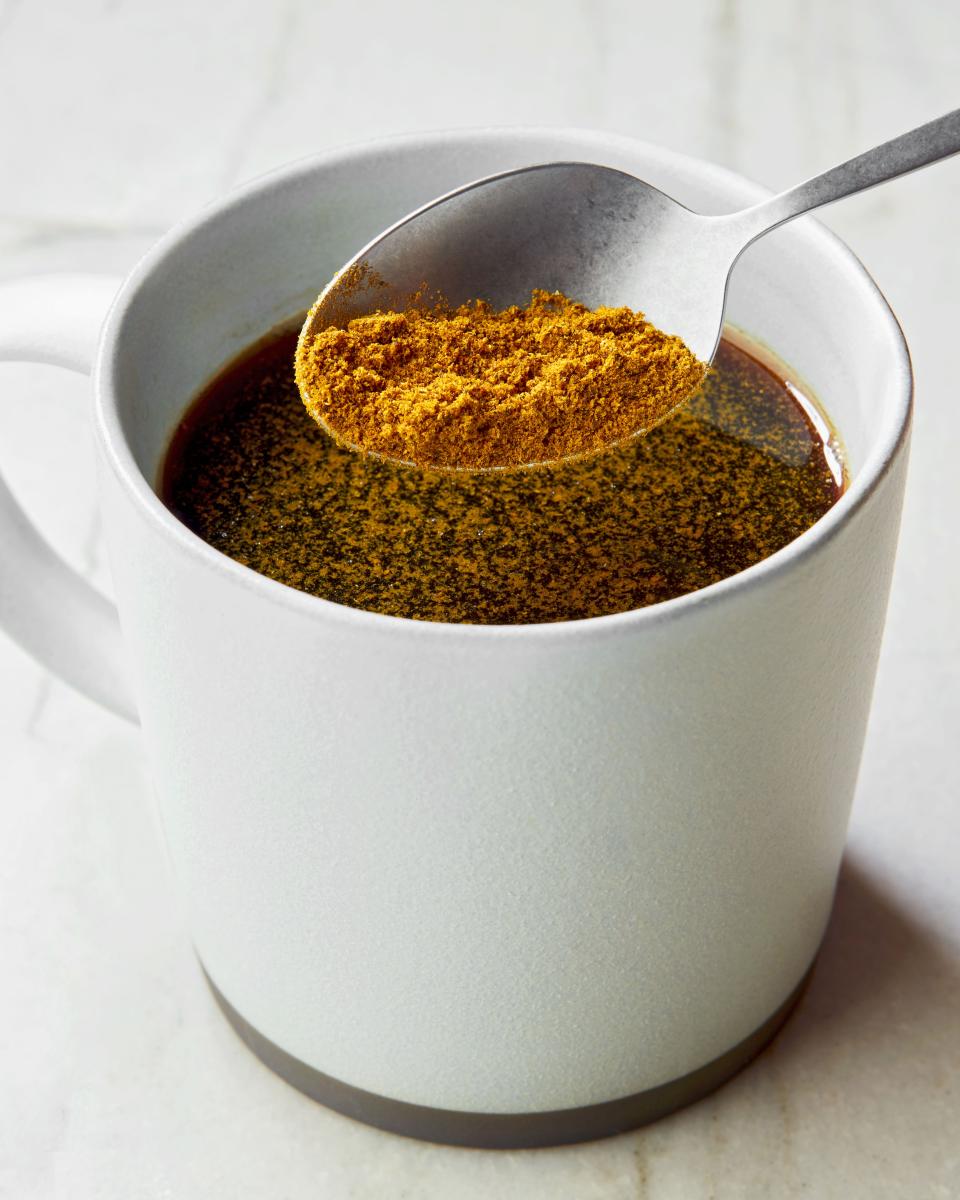Hawaij Is the Spice Blend That Goes Savory, Sweet—and In Your Coffee
First there was the cookbook: Amjaad Al-Hussain, who grew up in a Yemeni family in the D.C. area, started collecting recipes—from her mother’s generation and beyond—before they were lost. “After I got married, I recognized that there’s this huge gap generationally, where many of my aunts and my mom had certain Yemeni recipes memorized by heart,” she says. “I found myself constantly calling her and asking questions.” A pharmacogenomics expert and Georgetown University adjunct by day, Al-Hussain spent her scant off-hours compiling the recipes into a book, Sifratna: Recipes from Our Yemeni Kitchen, which she self-published in 2018.
After she launched the book, Al-Hussain headed back to the kitchen to develop a second product: hawaij, or hawayij, a spice blend that's a staple of Yemeni cuisine. Though she'd included a recipe for hawaij in Sifratna, Al-Hussain said, "Not everyone has time to buy whole spices and go through the process in order to have that." She figured she'd make it easy—now she sells it, premixed, in jars. (And has since added a third product: a children's book.) Warm, fragrant, and a little peppery, hawaij serves as a kind of "multipurpose" spice mix in Yemeni cooking, Al-Hussain said—a flavor profile linked with a place, in the manner of garam masala or ras el hanout.
In fact, hawaij has some ingredients in common with both of those mixtures. “The most common ingredients used in all Yemeni hawaij would be cumin, coriander, black pepper, turmeric, cardamom, cinnamon,” Al-Hussain says. “Some people will use very modest quantities of cloves; some will even use nutmeg.” In Al-Hussain’s kitchen, hawaij finds its way into recipes like a warming lentil stew and a spicy chicken soup, into roasted potatoes and simmered okra. Like other folks in the region, Yemenis enjoy rich, comforting ful—stewed fava beans—for breakfast; hawaij spices up Al-Hussain’s recipe for that, as well.

Hawaij - IG
But you can add a pinch just about anywhere it makes sense, she says: “I use it for my vegetable stews. I use it for chicken marinades, fish, meat. My husband has cooked chicken wings with it.”
Everybody’s is different. “When it comes to hawaij, every household—some auntie or some grandma—has their special mix,” Al-Hussain says. “My mom’s mother—my maternal grandmother—her hawaij mix was a lot more simple. She only did coriander, cumin, and black pepper, with a little bit of turmeric just to give it some color. Wiser home cooks will leave salt out—that gives an individual more flexibility in adding their own salt.”
And just like you can make a margarita with garam masala—or a spiced-pear dessert with ras el hanout—hawaij has uses in the kitchen beyond vegetables and proteins. The blend can also be found on countertops and in kitchen cupboards in Israel, where it was brought by Yemenite Jews immigrating in the mid-20th century, and where it’s “one of the most popular spice mixes,” according to New York City chef Einat Admony, writing in her cookbook Shuk: From Market to Table, the Heart of Israeli Home Cooking.
In Shuk, Admony provides not one but two recipes for hawaij. One is “soup hawaij,” a blend of coriander, cumin, turmeric, black pepper, cardamom, and cloves, similar to the mixture that Al-Hussain makes and sells. Its name indicates at least one use for it; so does the name of Admony’s other hawaij recipe, “sweet coffee hawaij,” a blend of cloves, nutmeg, cinnamon, ginger, and cardamom. You know what to do: Sprinkle some into your morning grounds and brew up an exceptionally aromatic pot of coffee. (Or, if you forgot to do that, stir a few pinches of hawaij right into the hot coffee itself.)
But “sweet” hawaij has a lot of potential beyond that—in baking, for instance. “It’s a perfect match for pumpkin pies,” Admony writes. I used to work in a bakery that added Chinese five-spice powder to its apple pies: Folks eating the pie wouldn’t have been able to identify it as such, probably, but it provided that same warming constellation of spices they were familiar with. Sweet hawaij would likewise be a killer addition to apple pie, or in any baking recipe, really, that would benefit from a little spice. Order it online or blend it yourself, then try the mixture out in gingerbread, fruit crisps, apple pie, oatmeal cookies, pain d’epices, carrot muffins (or carrot cake!). Or simply put it in your morning oatmeal. Monotony is rampant on this planet at the moment; adding some spice where there’s usually none can go a long way.
Originally Appeared on Epicurious

